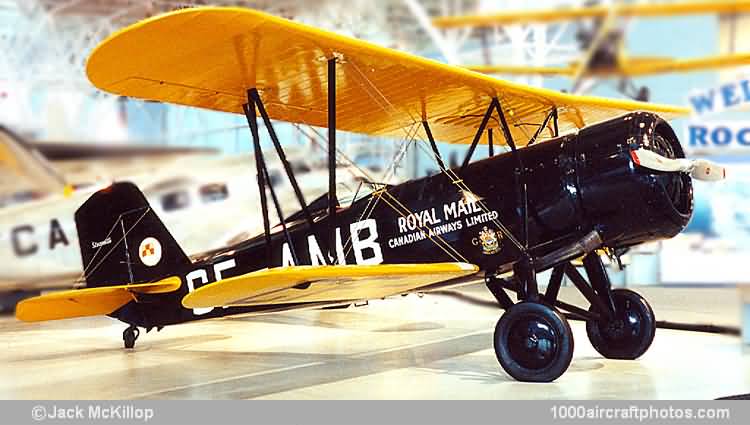These aircraft were known as Junior or Senior Speedmails or Specials depending on the engine installed and whether it was designed to carry one or two passengers or mail/cargo. Some have said that this aircraft was the last of the luxury styled biplanes produced in quantity by Stearman Aircraft Co. It was a large, sleek, elegant airplane that epitomized the term 'class' and was the ultimate in business biplanes in the early 1930s. Its designer, Lloyd C. Stearman, late in life said, 'It was the best airplane I ever designed'.
This aircraft was built and registered NC784H on July 15, 1930 as a Model 4E Special and was powered by a 450 hp Pratt & Whitney R-1340 Wasp nine-cylinder, single row, air-cooled radial engine giving it a maximum speed of 160 mph (257 kmh) and a range of 600 mls (966 km). Sold on October 7, 1930, this was one of four Model 4Es acquired by The Standard Oil Company of California, Inc. (SoCal, now Chevron), San Francisco, California. The SoCal fleet number was '4' and the price was US$16,000 (US$208,916 in 2010 dollars). With thanks to Graham Slack, Terry Judge and Henk Wadman, here is the complete listing of subsequent owners:
L.B. Daniels, San Francisco, California, June 22, 1933.
Continental Air Lines, Inc., Denver, Colorado, January 3, 1938.
George W. Teter and Marcus O. Schellenberg (W. & B. Flying
School), Chickasha, Oklahoma, November 28, 1940.
Mal Carberry, Brawley, California, May 30, 1942.
Carberry Crop Dusters, Inc., Fresno, California, August 20, 1951.
J.F. Carter, Frisco City, Alabama, September 17, 1963.
B.B. Burroughs, Homedale, Idaho, May 7, 1964.
Dean Wilson, Homedale, Idaho, January 6, 1965.
John N. Paterson, Fort William, Ontario, Canada, February 2, 1965.
National Aviation Museum, Rockcliffe, Ontario, September 1970.
In early February 1965, Paterson transferred the aircraft to Fort William (amalgamated into Thunder Bay in January 1970), Ontario, located on Lake Superior about 670 mls (1,078 km) West-Northwest of Ottawa, Ontario. The aircraft had been converted to a crop duster in 1942 and it took him five years to restore it and he flew the restored aircraft, registered CF-AMB on November 18, 1969, for the first time on December 3, 1969. On September 25, 1970, he flew it to Rockcliffe, Ontario with commemorative mail and presented it to the National Aviation Museum (renamed Canada Aviation Museum in 2000), painted and marked as the original 1930 CF-AMB, a Model 4EM (c/n 4016).
